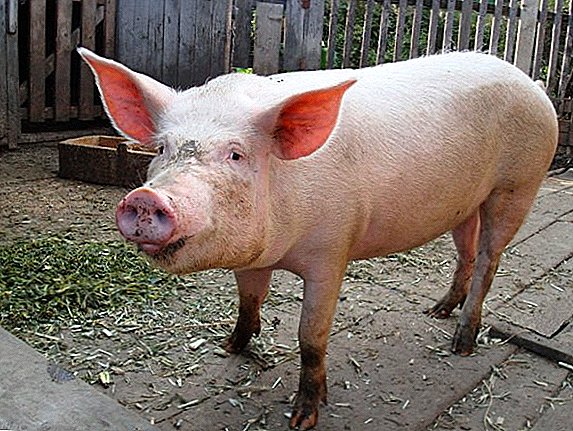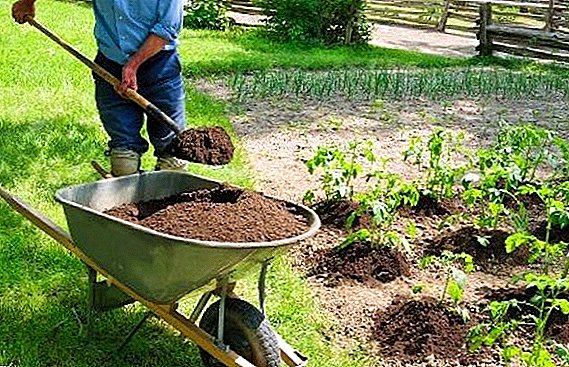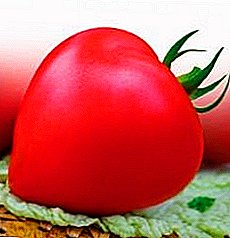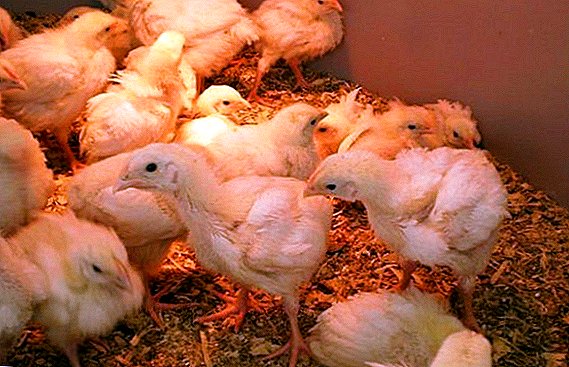 Beets can be seen on almost any table in the country. It is added to the first and second dishes, salads, because this root crop is extremely healthy and has excellent taste. Today, the Pablo F1 variety of table beet is becoming increasingly popular for growing on its plot. About him and will be discussed further.
Beets can be seen on almost any table in the country. It is added to the first and second dishes, salads, because this root crop is extremely healthy and has excellent taste. Today, the Pablo F1 variety of table beet is becoming increasingly popular for growing on its plot. About him and will be discussed further.
Did you know? Babylon and the Mediterranean include early references to beets. There, they used only tops, and the roots were used for medicinal purposes.
Pablo beetroot: variety description
it hybrid varietycreated in the Netherlands. It is often grown on an industrial scale. The growing season is about 105 days, that is, it is medium early. It is resistant to low temperatures, lack of moisture, major diseases, does not require careful maintenance and high-quality soil.
It can be stored for several months without spoiling and losing its taste. High yield is also characteristic - about 700 quintals per hectare.
 The beet fruits themselves are solid, large (weight from 109 to 180 g, 10-15 cm in diameter), round, have a thin tail, a smooth skin of dark red color and tender, juicy, flesh-colored ruby-red with a purple tinge, without rings and white blotches; Pablo leaves are medium, oval, light green in color with purple streaks and wavy edges. Outlet - upright.
The beet fruits themselves are solid, large (weight from 109 to 180 g, 10-15 cm in diameter), round, have a thin tail, a smooth skin of dark red color and tender, juicy, flesh-colored ruby-red with a purple tinge, without rings and white blotches; Pablo leaves are medium, oval, light green in color with purple streaks and wavy edges. Outlet - upright.
When and how to plant beets, especially planting root
"Pablo" is better to plant when the soil is already well heated, at least to + 5 ... + 7 ° С (end of May - June) and the air temperature is not lower than + 18 ... + 20 ° С. Although this root crop is unpretentious in relation to the soil, but does not like acidic soil.
It is more suitable light and fertile soil, which is fertilized with humus and peat in small quantities. Place for landing, choose a well-lit.
Important! For rapid germination, it is desirable to pretreat the seeds of the Pablo beet. To do this, soak them for 2-4 hours in a weak solution of potassium permanganate.Make the required number of furrows at a distance of 30 cm and sow (about 2 cm deep). Liberally pour. After 3-4 leaves, you need to feed the beets. Dilute boric acid and nitroammofosku (1:30) in 10 liters of water.
 You can also plant Pablo in a seedling way. Three weeks before transplantation into the open ground, pre-treated seeds are sown in a greenhouse at a distance of about 3 cm from each other. When shoots appear, water moderately, air seedlings and keep the temperature at + 18 ... + 20 ° С.
You can also plant Pablo in a seedling way. Three weeks before transplantation into the open ground, pre-treated seeds are sown in a greenhouse at a distance of about 3 cm from each other. When shoots appear, water moderately, air seedlings and keep the temperature at + 18 ... + 20 ° С.
After the emergence of 4 sheets of seedlings planted in open soil. Pre-water plants and process with growth stimulants. Landing is carried out with an earthy ball. At the beginning it is permissible to shade the ridge to better adapt the seedlings.
Did you know? On the territory of Kievan Rus, beetroot became known in the X-XI centuries, in Western Europe - the XII-XIV centuries and in the countries of Northern Europe in the XIV century.
How to care for beetroot "Pablo"
Beet varieties "Pablo" is not demanding in the process of growing, but to increase the yield and improve the quality of the fruit is to implement simple rules of care.
Loosening and weeding
Loosening is carried out after germination of seeds, as well as after each watering and precipitation. It helps air circulation. Weeding is carried out regularly, this is especially important from the very beginning, when the seedlings need light, moisture and nutrients most of all.
Watering beet

Watering is also necessary regular, despite the tolerance of this beet to the long absence of moisture. Water every 7 days, and during active growth and ovary of the fetus - twice.
Pest protection
Beet "Pablo" is resistant to most diseases, which is its bright characteristic and one of the reasons for such popularity of the variety. If you remove weeds in a timely manner and fertilize the soil, you will significantly increase the resistance of the plant.
Important! Avoid fertilizer with nitrogen, because it can penetrate and accumulate in the root, and then adversely affect the health of the person who ate it. Better use potassium-phosphorus variants.The only thing that can significantly harm the variety is rodents. To combat them, dig the soil deep in the fall and spring, and sprinkle the furrows with ash, tobacco dust or special chemicals.
When to harvest, how to determine fruit ripening
This variety ripens by mid-August and early autumn. If the crop is not harvested on time, it will worsen both the taste of the beet and its appearance.
 To determine the readiness of the fruit for harvesting, pay attention to the lower foliage - it begins to dry, turn yellow, fade. And the fruits themselves reach 10-15 cm, they show characteristic growths.
To determine the readiness of the fruit for harvesting, pay attention to the lower foliage - it begins to dry, turn yellow, fade. And the fruits themselves reach 10-15 cm, they show characteristic growths.
When harvesting, use a fork, so you do not damage the fruit and remove the upper layers of the earth. After digging, cut the leaves, leaving cuttings of 1-2 cm, put in a container and pour it with sand. Store at temperature 0 ... + 2 ° С.
In this article, we talked about such a wonderful root crop, like the beet "Pablo F1", about how to plant and care for it, harvest it, and also provided a description of the variety. If you follow the presented tips, you will definitely increase the yield and quality of the product.












